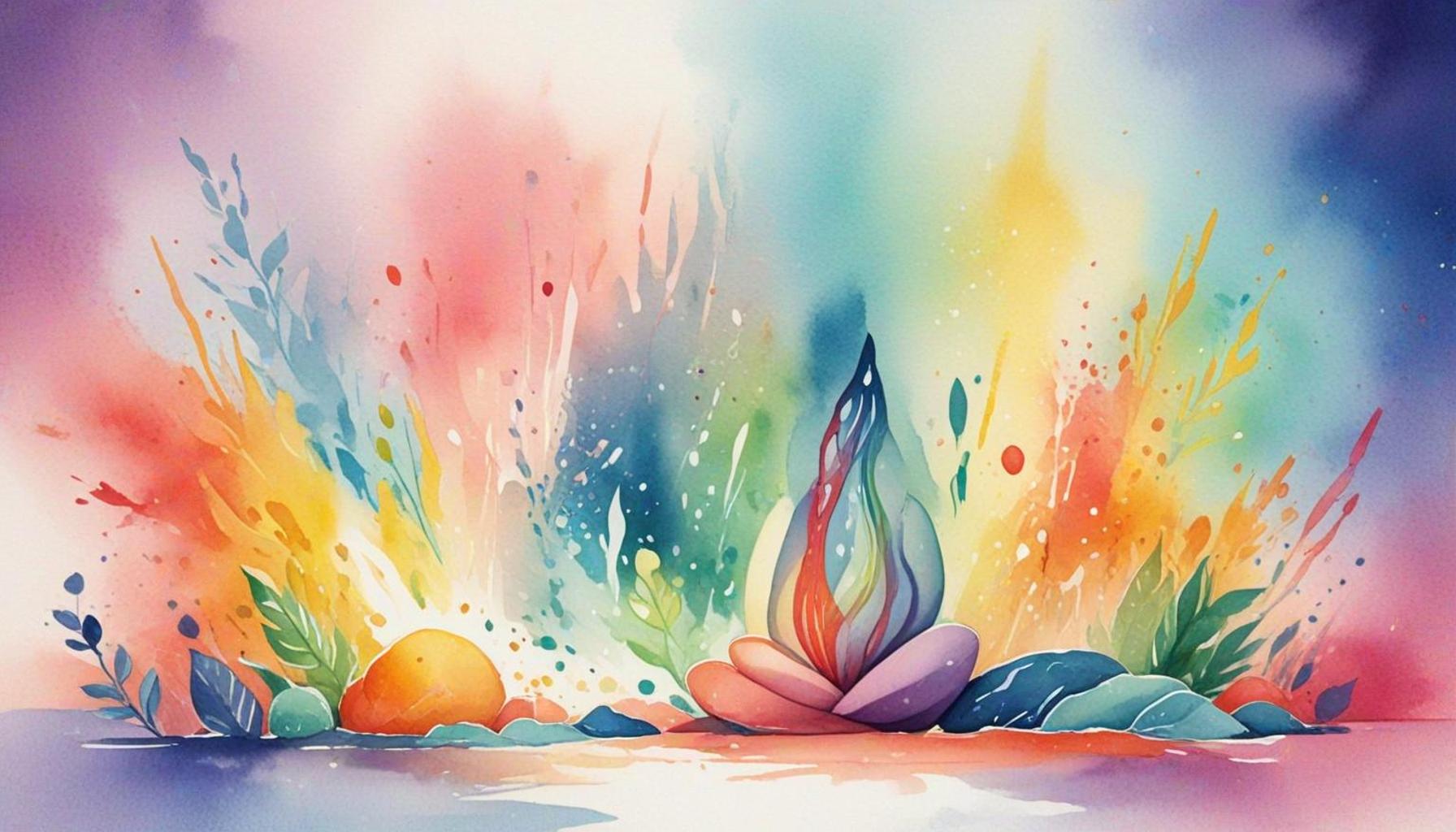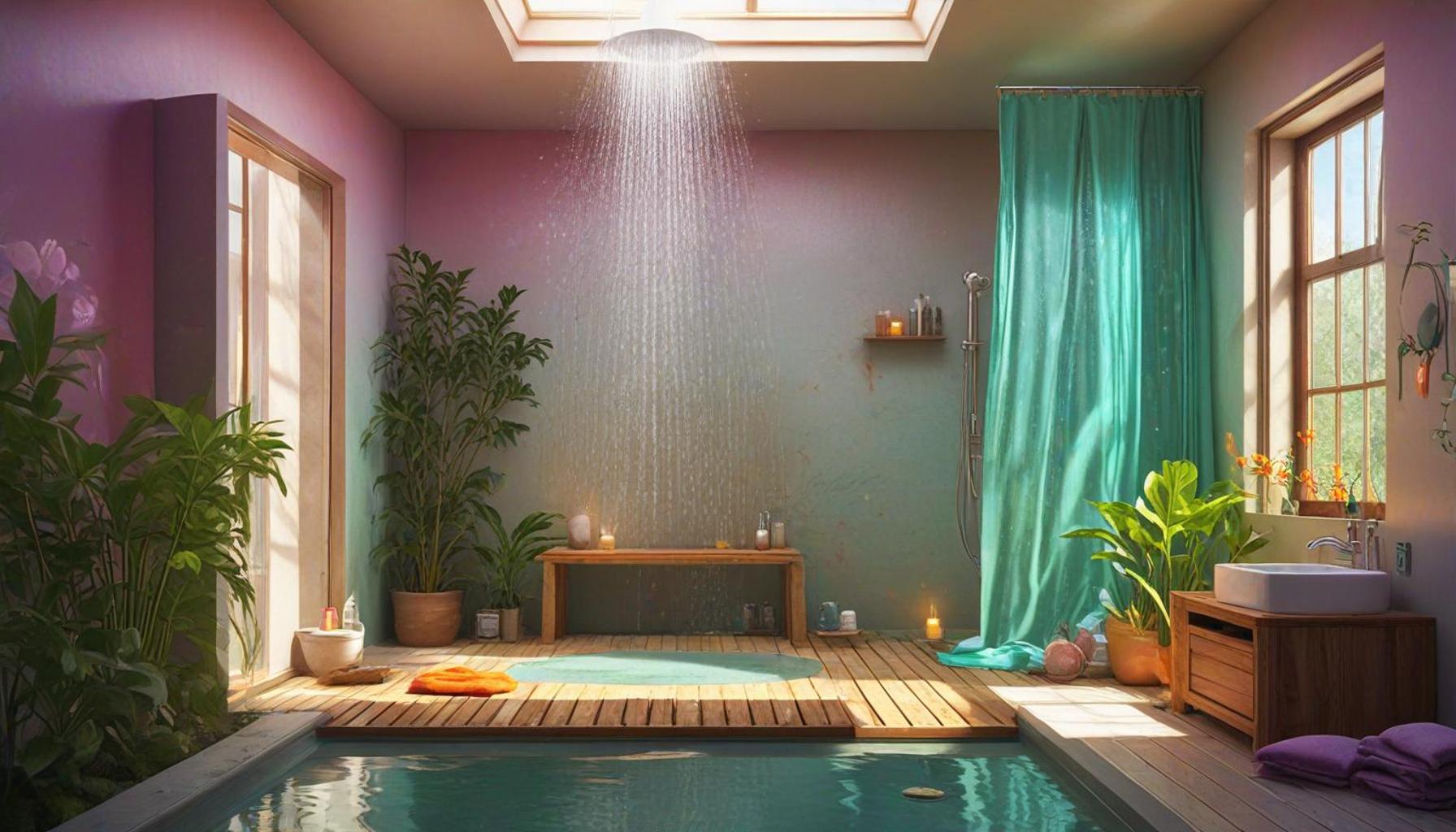The Influence of Colors and Lighting on the Mindful Cleansing Experience

The Role of Sensory Elements in Mindful Cleansing Rituals
Our environments speak to us in more ways than we often realize. The interplay of colors and lighting can subtly influence our emotions, affecting both our mental and physical well-being. During mindful cleansing rituals—practices aimed at rejuvenating the body and soul—these sensory elements become pivotal in enhancing the experience. Recognizing how to strategically employ color and light can significantly deepen our engagement with self-care practices.
To illustrate the impact of various colors, consider the following:
- Blue: Often associated with the sky and sea, blue fosters feelings of tranquility and calmness. This makes it an ideal color for settings designed to promote relaxation, such as a home spa or meditation corner. For instance, incorporating blue flowers or using blue-hued decor can help create a peaceful atmosphere, conducive to letting go of stress.
- Yellow: A shade that embodies sunshine and cheerfulness, yellow brings about feelings of happiness and energy. It can be especially uplifting during cleansing sessions intended to invigorate and refresh one’s spirit. Think about adding golden candlelight or a bright tablecloth during a cleansing ritual to infuse the space with positivity.
- Green: Representing nature and harmony, green has a grounding effect. Whether through indoor plants or artwork depicting lush landscapes, this color can anchor the cleansing experience in a sense of balance, mirroring the restorative benefits of nature.
Equally important is the role of lighting in shaping our experiences. Different types of lighting can dramatically alter the mood of a space:
- Natural Light: Sunlight has been shown to enhance mood and stimulate feelings of well-being. Consider setting your cleansing ritual near a window, allowing the natural light to flood the room, connecting you to the outside world.
- Soft Lighting: Dim, warm lighting creates an inviting atmosphere perfect for relaxation and mindfulness. Using lamps with warm bulbs or candles can soften the space, making it ideal for intimate self-care moments.
- Colored Lighting: Adjustable colored lights can quickly shift the environment’s energy. For instance, a vibrant orange light can energize the atmosphere, while a calming lavender light can help induce relaxation—essential for evening rituals before sleep.
As we explore how mindful cleansing rituals can be enriched by these sensory experiences, we reveal the power of creating a personalized sanctuary. The right combination of color and light not only fosters a tranquil ambiance but also enhances self-awareness, allowing individuals to embark on a transformative journey of rejuvenation. For anyone in Nigeria, integrating local fabrics or art inspired by the rich cultural heritage can significantly enhance this personalized experience, making the ritual more meaningful and connected to one’s roots.
Ultimately, embracing the connection between sensory impact and self-care practices can lead to overwhelming benefits, guiding you towards a more balanced and harmonious life.
ADDITIONAL INSIGHTS: Expand your understanding here
Embracing Colors for Enhanced Mindfulness
Colors play a fundamental role in shaping our emotional landscape and can significantly influence our mindful cleansing experience. By integrating specific colors into our cleansing rituals, we can create environments that resonate with our intentions, enhancing the effectiveness of our self-care practices. For instance, when aiming for relaxation, shades of blue can create a calming backdrop, allowing the mind to unwind and release tension. In contrast, brighter hues such as yellow can infuse a space with energy, inspiring positivity and motivation during cleansing sessions.
Moreover, the direct impact of colors can extend beyond aesthetics; they can affect physiological responses as well. Research shows that colors can influence heart rates, blood pressure, and even brainwaves. This makes understanding color psychology essential for anyone looking to optimize their mindfulness journey. Here are some colors and their effects to consider when crafting your cleansing space:
- Purple: Often associated with spirituality and introspection, purple can elevate the spiritual aspect of cleansing rituals. Using purple candles or decor can help create a serene atmosphere conducive to deep reflection.
- Orange: This vibrant color encourages socialization and enthusiasm. Incorporating orange elements may uplift your spirit and provide a sense of community, especially during group cleansing sessions.
- White: Symbolizing purity and peace, white surfaces can help clear mental clutter, allowing for a fresh start. Designing your cleansing space with white linens or minimalistic decor can enhance focus during meditation or yoga practices.
The Transformative Power of Lighting
The influence of lighting further amplifies the sensory experience of cleansing rituals. Lighting can dictate the mood and emotional atmosphere of a space, making it crucial to consider both its intensity and color. As mentioned earlier, natural light provides the most authentic connection to our surroundings, often elevating our mood and energy levels. It has been shown to increase serotonin production, the hormone responsible for feelings of happiness. For those practicing cleansing rituals in Nigeria, making the most of natural sunlight—especially during the golden hours of early morning or late afternoon—can be especially beneficial.
In contrast, soft and dim lighting serves to cultivate an intimate, cozy environment, perfect for introspection and relaxation. This can be achieved through the use of lamps with warm bulbs or strategically placed candles, which also add an element of warmth and comfort to the ritual. Many Nigerians appreciate the use of locally made, handcrafted candles that bring a cultural touch to their practices, enhancing the overall experience.
Finally, incorporating colored lighting can alter the atmosphere in dynamic ways. Adjustable colored LED lights allow for personalization of the cleansing environment, tailoring the emotional ambiance to the desired outcome. For instance, using a gentle blue light can promote tranquility, while a rich green light can evoke feelings of renewal and growth. By thoughtfully selecting these colors and lighting elements, individuals can profoundly transform their cleansing rituals, turning mundane routines into sacred, rejuvenating experiences.
As we continue exploring The Influence of Colors and Lighting on the Mindful Cleansing Experience, it is essential to understand how these elements tap into our emotions and enhance the overall cleansing journey. Colors can evoke particular feelings and reactions, often shaping our perception of space and, subsequently, our cleansing experience.
The Psychology of Color in Cleansing Spaces
The colors used in cleansing environments are not merely aesthetic choices; they play a significant role in influencing mood and emotional states. For example, soft blues and greens promote tranquility and relaxation, making them ideal for spaces designated for meditation and cleansing rituals. In contrast, bright yellows can invigorate and uplift, injecting energy into the experience but potentially distracting from relaxation if overused.
Lighting’s Role in Setting the Mood
Lighting is another crucial component that significantly affects the atmosphere of cleansing spaces. Natural light enhances vitality and creates a sense of openness, allowing individuals to feel connected to the outdoors while they cleanse their minds and bodies. Conversely, soft, dim lighting can offer a cocoon-like environment, encouraging introspection and mindfulness during cleansing practices. The transformation of space through dynamic lighting can heighten awareness and promote deeper engagement with the cleansing process.
| Color | Psychological Impact |
|---|---|
| Blue | Promotes calmness and serenity |
| Yellow | Increases energy and attention |
| Green | Represents renewal and growth |
| Soft White | Creates a warm, inviting atmosphere |
Understanding the interplay between colors and lighting can empower individuals to create personal cleansing environments that resonate with their emotional needs and facilitate a deeper state of mindfulness. By tailoring these elements, one can enhance the cleansing experience, leading to more profound and transformative results. As we delve further into mindful cleansing practices, it becomes increasingly evident that the environment truly shapes the experience.
SEE ALSO: Click here to read another article
Creating Atmospheres with Colors and Lighting
The combination of colors and lighting not only sets the stage for a mindful cleansing experience but also supports deeper emotional processing and clarity. In Nigeria’s vibrant culture, where traditional beliefs intertwine with modern therapeutic practices, the use of specific palettes and light arrangements has found its place in personal cleansing rituals. Embracing these elements can transform a simple moment into an enriching sensory journey.
One emerging trend is the synchronization of cleansing with the color palettes found in nature. For instance, considering the lush greenery surrounding many Nigerian communities, incorporating shades of green indoors can resonate deeply with the idea of growth and renewal. Green plants, in conjunction with natural light penetrating through windows, can create a serene ecosystem that encourages mindfulness during cleansing sessions. Studies show that exposure to greenery reduces stress and promotes a sense of well-being, making it an ideal companion for any cleansing ritual.
Consider the effects of communal cleansing practices, particularly during festive seasons or traditional ceremonies. Bright colors, such as vibrant red, are often seen in outfits and decor, symbolizing vitality and health. This could be a brilliant addition to group cleansing rituals, invoking shared energy and unity. When combined with warm, inviting lighting, a space can become suffused with positivity, transforming the act of cleansing into a collective celebration of renewal and coexistence.
- Natural vs. Artificial Light: Determining the balance between natural and artificial light is crucial. Utilizing natural light as much as possible can invigorate the cleansing experience. In contrast, when natural light is unavailable, selecting quality artificial lighting that simulates daylight can also keep the energy levels high, enhancing focus during meditation or yoga practices.
- Light Dimmer Switches: Specifically in urban areas of Nigeria, where hustle and bustle reign, installing dimmer switches can allow for adaptability, letting you adjust your lighting according to the time of day and your emotional requirements. Creating a more muted ambient light after a stressful day can help facilitate relaxation.
- Color Psychology and Mood Lighting: Exploring colored bulbs or filters for lamps further emphasizes the capacity of lighting to evoke specific moods. As you delve deeper into your cleansing practice, consider setting the stage with lighting that reflects your intentions—energizing reds during active cleansing or soft pinks for compassionate self-reflection.
Furthermore, the infusion of scents in alignment with lighting and color adds another layer of ambiance to the mindful cleansing experience. Candles in harmonious color schemes can not only provide illumination but also envelop the space in fragrances that complement the emotions elicited by the colors. For example, pairing orange lighting with citrus-infused candles can uplift the spirit while simultaneously creating an inviting atmosphere conducive to social connection during group cleansing sessions.
Finally, consider the impact of transitions during your cleansing ritual. Gradually shifting from bright, invigorating lights to softer hues can reflect the journey from activity to introspection, gently guiding your mind through a transformative experience. The mindful cues prompted by changes in colors and lighting serve to anchor the practice, allowing for a greater connection to self and the moment at hand.
LEARN MORE: This related article may interest you
Final Thoughts on the Aesthetic Dimensions of Mindful Cleansing
As we delve deeper into the integral role of colors and lighting in enhancing the mindful cleansing experience, it becomes clear that these elements are not merely aesthetic choices but potent tools for emotional and spiritual rejuvenation. In a country as diverse and rich in culture as Nigeria, the thoughtful application of colors reflective of nature, like greens and vibrant reds, can profoundly impact our emotional states, facilitating deeper connections during cleansing rituals.
By harmonizing natural light with artificial sources, individuals can create spaces that invigorate the senses and promote relaxation. The advent of technologies such as dimmer switches allows practitioners to tailor their environment based on personal needs and moods, transforming everyday spaces into sanctuaries of peace. Additionally, the integration of color psychology suggests that even small adjustments, such as shifting to softer hues or selecting colored lighting for specific intentions, can enhance meditation and mindfulness.
As one explores the layers of ambiance created with different colors, lighting, and scents, the possibilities for amplifying the cleansing experience are infinite. This intricate interplay promotes a deeper understanding of ourselves and our intentions, serving as an invitation to continuously explore the relationship between our surroundings and our inner states. Engaging with these elements invites us to embrace cleansing not just as a practice, but as a journey toward awareness, unity, and transformation. In essence, being mindful of our environment can elevate the cleansing experience from a mere routine to a holistic communion of body, mind, and spirit.



